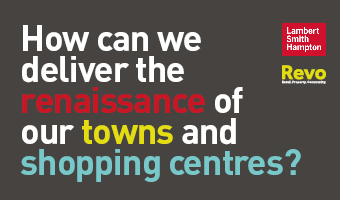Last year, as part of Labour’s draft housing manifesto, Starmer said the party would support the delivery of housing on specific areas of green belt land, such as disused car parks, which has been dubbed ’grey belt’.
As part of the proposed new rules, Labour would officially introduce grey belt land as a new category distinct from both brownfield and greenfield.
Despite supporting construction on grey belt land, Labour’s first golden rule is the prioritisation of brownfield development first. This is followed by the second rule that “poor-quality and ugly areas of the green belt” should be prioritised over nature-rich, environmentally valuable land.
The third golden rule is the prioritisation of affordable housing development. This would require all local plans to set a minimum 50% affordable housing delivery target when land is released.
The final two rules include boosting public services and infrastructure to support the delivery and improvement of new schools, nurseries and health centres; and setting requirements to improve green spaces and avoid development on “genuine nature spots”.
Reacting to Starmer’s announcement, the British Property Federation (BPF) said the new golden rules were a welcome step and added to the ”raft of reforms needed to boost housing” delivery across the UK.
Jeevan Thandi, associate director at Lambert Smith Hampton, said: ”Labour’s proposed approach could potentially offer a clear and unencumbered route to developing out sites which contribute little to the purposes of the Green Belt.
“However, it is important the proposal is delivered with extreme clarity on the definition of Grey Belt land and mechanisms which encourage local planning authorities to work together in identifying larger Grey Belt sites in close proximity of each other, allowing for new housing to be delivered at scale in the most sustainable locations.”
Melanie Leech, chief executive of the BPF, said: “Labour rightly identifies the potential of grey belt land to deliver new homes. A lot of green belt land is actually very poor quality but perversely has good transport links, and it should be brought to life to provide new homes, jobs and community facilities.
“The UK desperately needs more homes and modern critical infrastructure to make the country more productive and sustainable, and today’s announcement is one of many steps needed to get us there.”
”However, a future government will have to use multiple levers to genuinely achieve a step-change in housing delivery. This will include the inevitable need to deliver some development on current green belt land that does not neatly fit the ‘grey’ label.”
Colin Brown, head of planning and development at Carter Jonas, added: ”It is encouraging to see that Labour are at least attempting to grapple with the green belt conundrum. I absolutely agree that there are many sites designated as green belt which do not reflect the public’s perception of what the green belt actually is, including previously developed sites. There is also some logic in prioritising the use of ‘grey belt’ land where releases are needed to meet housing requirements.
”However, a future government will have to use multiple levers to genuinely achieve a step-change in housing delivery. This will include the inevitable need to deliver some development on current green belt land that does not neatly fit the ‘grey’ label.”
Get in touch

Email me direct
To:
REGISTER FOR UPDATES
Get the latest insight, event invites and commercial properties by email







